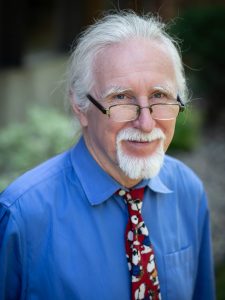 By Bob Hulteen
By Bob Hulteen
I woke up this morning planning to write a great blog about how fortunate I feel, as a lay synod staff person, to be able to attend the Bishop’s Theological Conference (BTC) in September. The annual conference is always held the last week of September (Sunday afternoon to Tuesday afternoon). It’s a time for the pastors, deacons, and chaplains of the synod to come together, be challenged by a leading theologian, and share ideas or concerns about ministry.
I am lucky to be able to interact with and appreciate the quality of pastoral leadership we have in the Minneapolis Area Synod. Sometimes in the synod office, one gets to see some of the worst of the church. But, BTC is a time to celebrate the vibrancy of faith and commitment, … even as there is also a little “play time.”
But, even though the speakers this year are good friends, I couldn’t think of that great personal tale that would inspire rostered leaders to attend the conference or lay leaders to ask their pastors what they learned at the conference.
So, … I’m going to let Ched Myers and Elaine Enns, our featured speakers at this year’s conference (under the theme “Facing the Wilderness, Embracing a Path”), speak for themselves. And, as you read the words of these theologians, know that each of their plenaries at BTC will reflect on a different passage from Luke, readings that will come up in the Revised Common Lectionary later this fall. (REMINDER: Registration for BTC closes on Friday, September 9.)
From Healing Haunted Histories, a recent book with Elaine as primary author (2021):
“The Greek term metanoia (Luke 5:32) means to change fundamental direction. It is usually translated ‘repentance,’ a term which in spiritualized Christian circles today has become utterly domesticated and sometimes damaging (powerful medicine that is mishandled can become toxic). However, if we instead recognize the lethality of our disease (to borrow from Twelve-Step language) and turn to a Power greater than our own, we can turn our individual and communal history around in the service of wholeness and justice, and heal our haunted bodies and body politic. We long for faith communities to become places that nurture the courage to peel the settler colonial onion seven layers down, fueled by the prophetic hope intoned by Malachi that a day is coming when the Creator will burn the works of injustice to its roots, ‘until the sun of righteousness rises, with healing in its wings’ (Mal. 4:2).”
From Ched’s Binding the Strong Man (based on Mark 3:27):
“Both the private sphere of the clan and the public sphere of the State equate personal sanity and political sanctity with maintenance of the status quo. Smarting from Jesus’ repudiation of their authority (1:22ff; 2:6ff), the scribes attempt to undermine Jesus’ popular standing by charging that he is in the service of the ‘prince of demons.’ It is a predictable strategy of threatened political leaders: neutralize the opposition by identifying them with the mythic arch-demon (in modern America this would be tantamount to calling Jesus a ‘terrorist’). Jesus’ deviant practice of exorcism, which liberates people for Jubilee and retribalization, is dismissed as either lunatic or traitorous.”
From “A Shameful Legacy,” an article by Elaine in Sojourners magazine (November 2012):
“A traditional whale-oil lamp is solemnly lit by an Inuit elder. After being brushed with cedar and smudged with sage, three commissioners take their seats. A survivor begins his testimony, haltingly narrating painful memories from 60 years ago. Soon tears begin to flow, and a support person carefully collects the tear-soaked tissues into a basket, to be added to the sacred fire that burns outside the hall. In this space, so filled with sorrow and rage, every ritual communicates respect, empathy, and determination, turning public halls into sanctuaries of healing.
For seven generations Indigenous Canadian children were taken from their homes and sent, most often by force, to Indian Residential Schools. Churches began operating these schools in the early 1860s, and by the 1890s the federal government had begun to make attendance mandatory as part of a policy of assimilation into Canadian society. In these schools children were forbidden to speak their native languages, forced to conform to European ways of life, and often abused emotionally, physically, and sexually. Though most residential schools were closed by the mid-1970s , the last was not shuttered until 1996.
As part of a 2007 legal settlement with survivors, the Truth and Reconciliation Commission of Canada (TRC) was created, with a five-year mandate to document the testimony of survivors, families, and communities affected by the residential school experience and to inform all Canadians about this tragic history.”
From “A Watershed Moment,” an article by Ched in Sojourners magazine (April 2014):
“Our history is increasingly hostage to a deep and broad ecological crisis. Stalking us for centuries, it is now upon us in the interlocking catastrophes of climate destruction, habitat degradation, species extinction, and resource exhaustion. Some call it ‘peak everything.’
‘All we have to do to destroy the planet’s climate and biota and leave a ruined world to our children and grandchildren,’ concluded environmental policy analyst James Gustave Speth in The Bridge at the Edge of the World, ‘is to keep doing exactly what we are doing today … to release greenhouse gases … impoverish ecosystems and release toxic chemicals at current rates, and the world in the latter part of this century won’t be fit to live in.’
Our Christian faith and practice now unfold either in light of or in spite of this crisis. Our choice is between discipleship and denial.”
It will be so great to hear from them in person and I’m confident our rostered ministers will walk away with new learnings and new energy. If you are a rostered minister, please join us. If you are a church-goer, please encourage your rostered colleagues to attend and then come back and share what they take away.
